Natural landscapes and protected areas in Saxony-Anhalt
Saxony-Anhalt is rich in natural wonders: a national park, three biosphere reserves, five nature parks with a profusion of diversity and countless rivers and lakes display the many facets of nature in all its glory. And new open spaces are being created, to add to those that came into being naturally: renaturalisation projects, like those at the Goitzsche mine or the Geiseltalsee lake, are transforming former open-cast mines into lake landscapes that become areas of local recreation with space for countless activities. To be discovered by foot, by bicycle, on horseback or on the water – these diverse natural landscapes and protected areas of Saxony-Anhalt are always an experience for nature lovers.
In Overview:
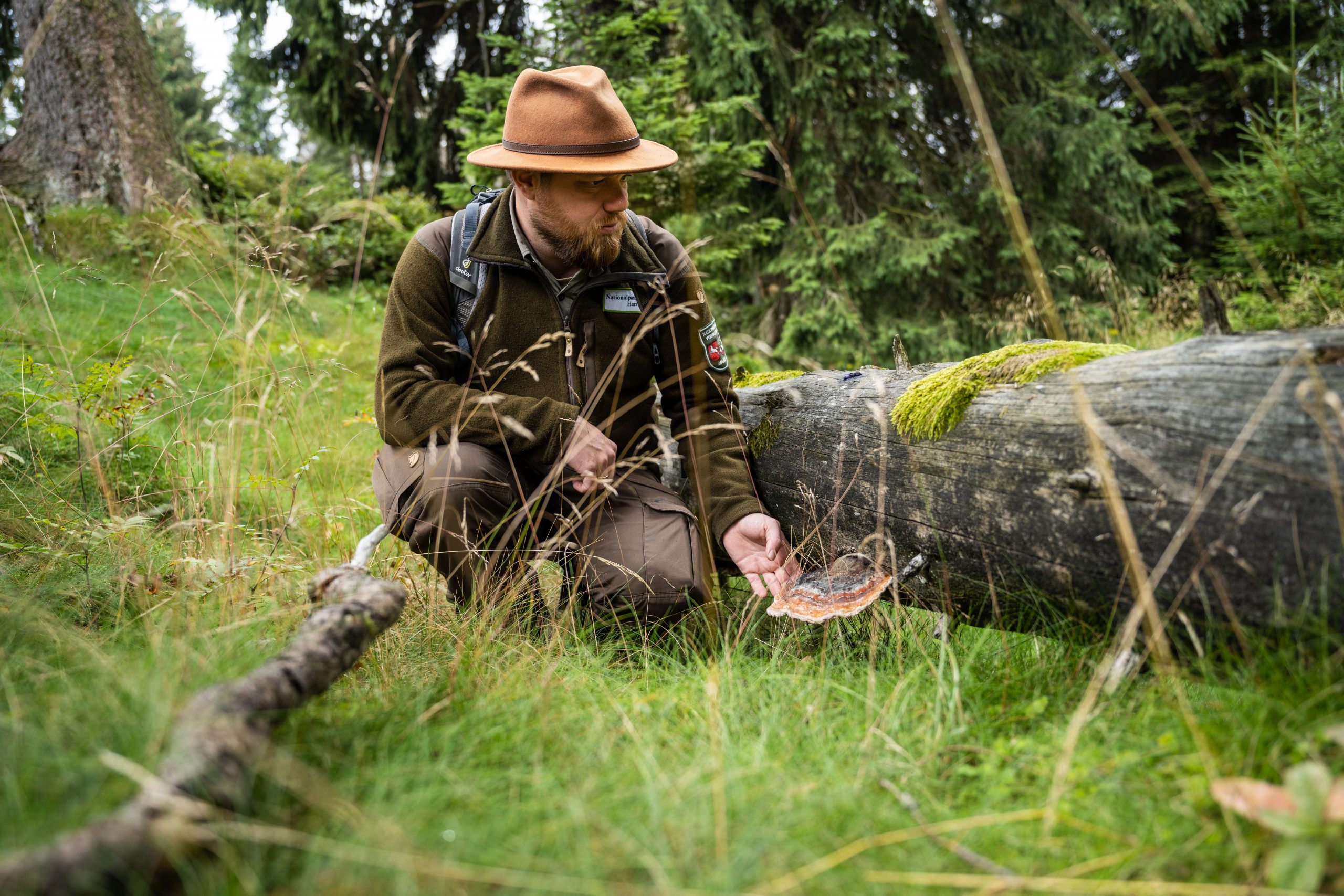
Harz National Park
Harz National Park is one of Germany’s largest forest nature reserves – roughly 97 percent of its 250 square kilometres is covered with trees. The Park accounts for about 10 percent of the Harz’s surface area and extends from the state of Saxony-Anhalt into Lower Saxony. In the midst of all this is the 1,141-metre-high Brocken mountain. More than 10,000 species of animals, plants and fungi find protected refuge here, including many rare and endangered species and relics from the last Ice Age.
National parks are protected areas with the highest level of protection, and protect natural processes. In all the national parks of the world, the idea is simply to let nature be. In our internationally recognised protected areas, nature is allowed to take its course. Therefore, in Harz National Park, landscapes shaped by humans are also being transformed back into wild, natural forests. Here, people are guests, and we have the rare opportunity to watch a new wilderness come into being.
More: www.nationalpark-harz.de

South Harz Karst Landscape Biosphere Reserve
The South Harz Karst Landscape Biosphere Reserve extends across 300 square kilometres at the eastern edge of South Harz. Visitors can expect diverse landscapes with mystical woods, geological rarities and unique natural treasures. The dynamic contours of the Karst Landscape in South Harz are dotted with gypsum in all its diverse shapes – relics from the ancient Zechstein Sea around 250 million years ago. Over the ages, water shaped the typical gypsum karst landscape, creating sink-holes, dolines and ponors (where water disappears underground), plus one of Germany’s largest gypsum caves, the Heimkehle.
Around the village of Questenberg, in particular, imposing rock formations alternate with shady green deciduous forests and meadows rich in diversity. Through these diverse habitats, where flora and fauna abound, winds one of Germany’s most beautiful hiking paths, the Karst Trail. Along this route, the biosphere reserve can be traversed and experienced all the way from Pölsfeld over in the east to the Heimkehle in the west.
More: www.biosphaerenreservat-karstlandschaft-suedharz.de

Middle Elbe Biosphere Reserve
Over 40 years ago, UNESCO awarded protected status to the Steckby-Lödderitz Forest and its Elbe floodplains. This sowed the seeds for the Middle Elbe Biosphere Reserve that can be enjoyed today. A very popular animal known to every child can be found here: the Elbe beaver, an important ambassador for the protection of this landscape of rivers and marshes. Today, roughly 1,200 beavers are once more to be found in this biosphere reserve. And it’s no exaggeration to say that this is almost miraculous. Around 1920, there were very few Elbe beavers left in this region, which has the most important hardwood floodplains in Central Europe.
The diversity of the various habitats in the floodplains is impressive and allows for a wealth of different species. The floodplain meadows along the riverbanks are a naturally formed home for water birds and insects, fruit trees, floodplain plants (e.g. Monnier’s snow parsley, speedwell) and rare orchids.
More: www.mittelelbe.com
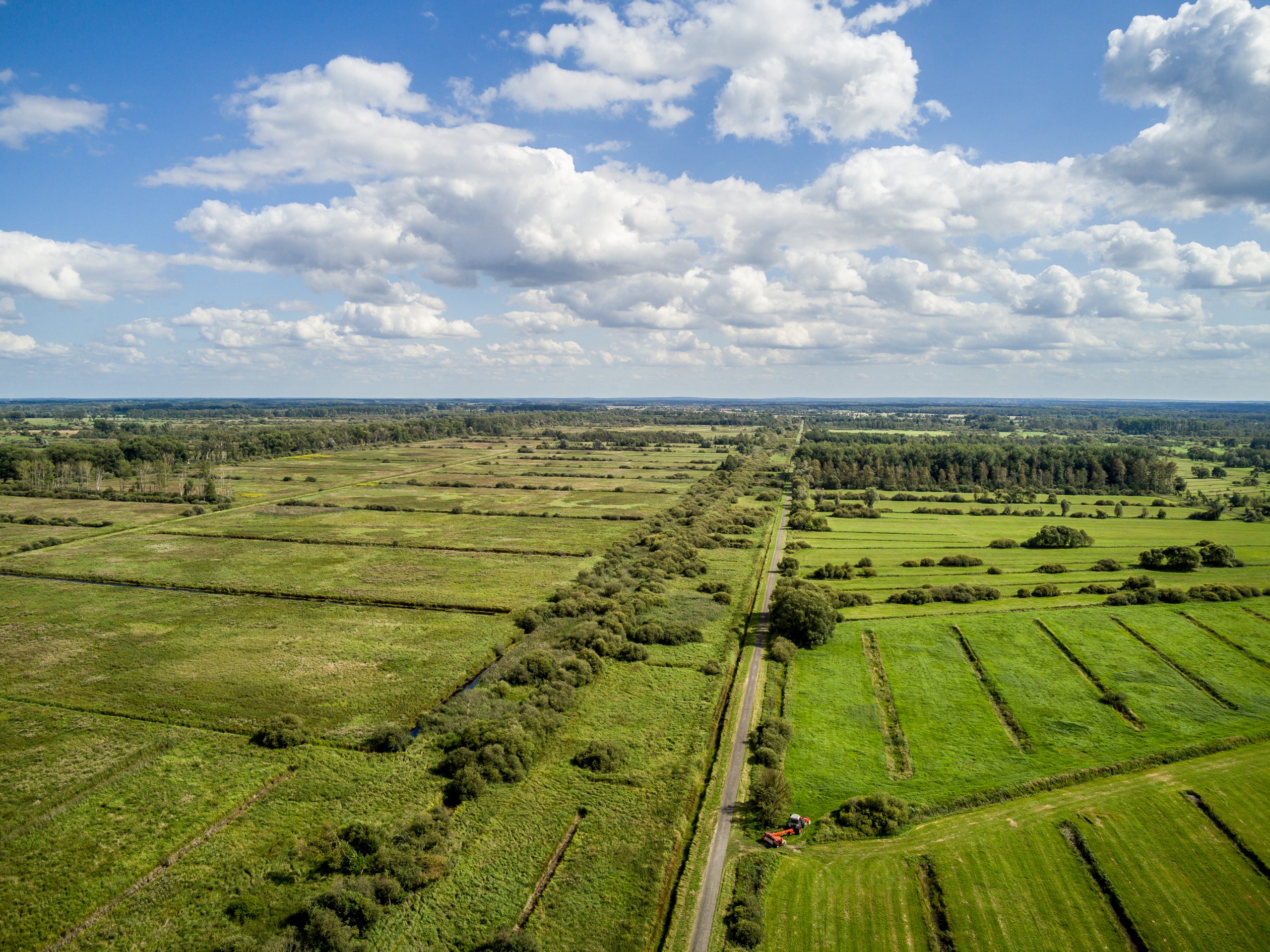
Drömling Biosphere Reserve
The Drömling in Saxony-Anhalt has been a designated biosphere reserve since 2019. The Aller and Ohre tributaries flow through the Drömling towards the Weser and Elbe rivers. They are vital elements in the biotope network of these river systems – for the otter, for example. The Drömling’s appearance today was the work of human hands. Over the last two centuries, the large-scale construction of drainage canals and ditches, the creation of dams and the building of the Mittelland Canal have given rise to an extensive network of waterways. Because of these 1,725 kilometres of waterways, Drömling Natural Park is also known as the “land of a thousand ditches”.
A continuous increase in the number of breeding pairs of white stork and crane, and the re-population and re-colonisation of the Drömling by the otter, beaver, corncrake, and white-tailed eagle are essentially thanks to nature conservation measures introduced over the last 15 years. The winter flooding of the land is the main reason this nature reserve is one of Europe’s most significant migration and resting areas for cranes, geese, swans, ducks, and curlews. The Drömling is also especially valued as an important settlement habitat for the eastern migratory white stork population. What’s more, it is a refuge for more than 400 species of animals and plants on the Red List of Threatened Species.
More: www.biosphaerenreservat-droemling.de
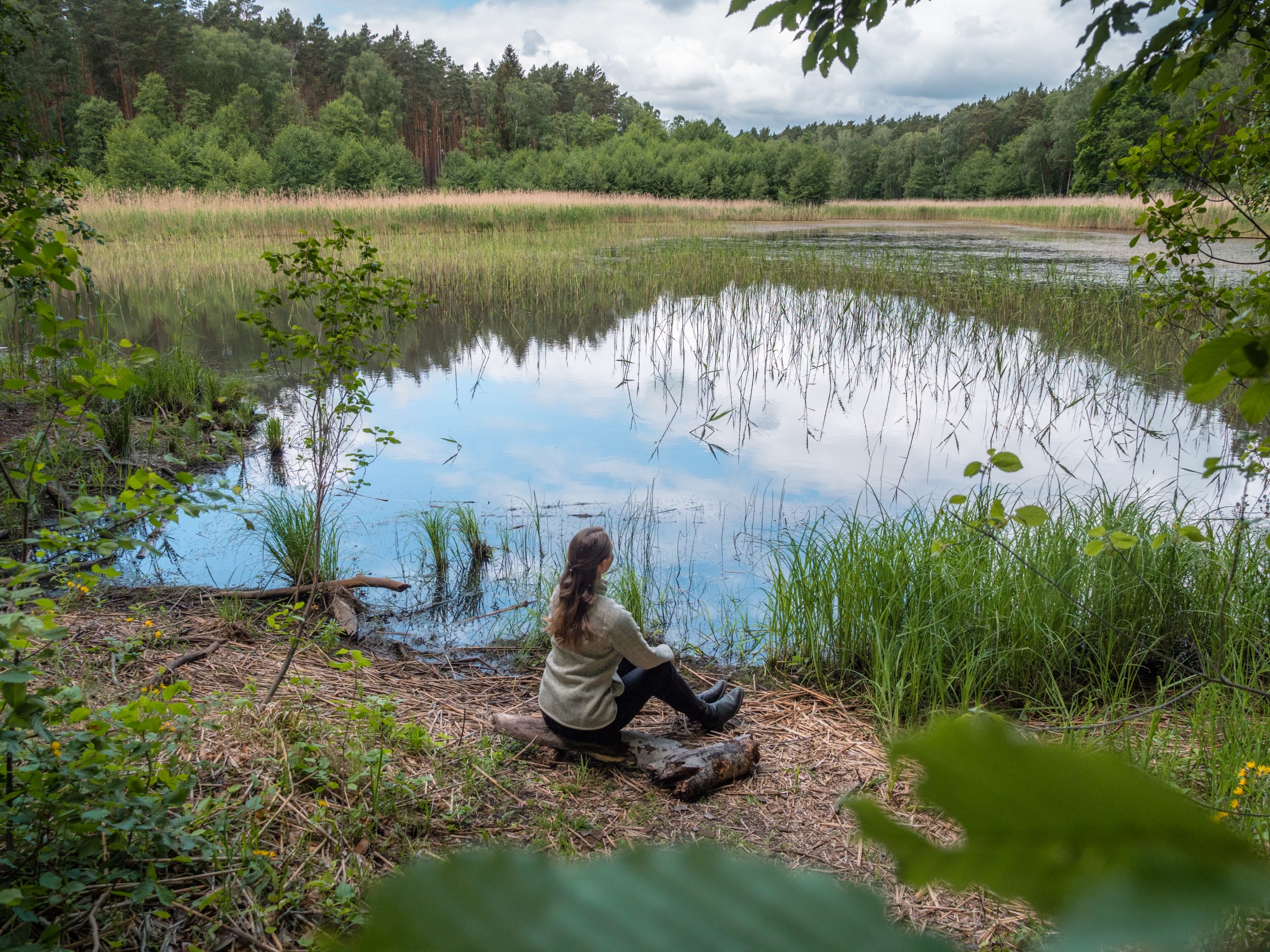
Düben Heath Nature Park
Düben Heath Nature Park nestles in the natural riverscape between the Elbe and Mulde rivers, and extends into two states. It covers 770 square kilometres and, with woodland accounting for 66 percent of this area, is Central Germany’s largest self-contained mixed forest. Here, shady woods contrast with sunlit farmland, romantic lakes and ponds, and stretches of moorland and meadow that are home to many species. The heathland of the rich cultural landscape is sprinkled with villages.
All this makes Düben Heath an ideal tourist destination for nature-lovers, fans of outdoor activities, and people in search of relaxation. Over 500 kilometres of signposted trails guide visitors through some charming nature, and can be discovered on foot or by bicycle. Families with an interest in nature will find their ideal destination at the Nature Park House in Bad Düben, the Forest House at Lake Bergwitz in Kemberg and the House by the Lake (HAUS AM SEE) Information Centre in Schlaitz near Bitterfeld-Wolfen. Interactive exhibits playfully introduce visitors old and young to themes such as forest, water, native flora and fauna, and the role of people on Düben Heath. The idyllic location and generous outdoor space offered by these venues provide ample room for romping and discovering.
More: naturpark-duebener-heide.de

Fläming Nature Park
Fläming Nature Park in Saxony-Anhalt sits between the glacial valley of the Elbe in the south and High Fläming in the north. The sandy to loamy soil is dominated by coniferous forests, colourful meadows, farmland, and naturalised streams, as well as oaks, copper beeches and alders. A great many animal and plant species deserving of protection, such as the wolf, the great capricorn beetle, the flowering fern and arnica, share refuge on the gently rolling hills. Even salmon are gradually returning to the Nuthe river.
Discover animal and plant species with protected status that can now only rarely be found. Hiking, horse-riding, cycling, canoeing, exploring the history of settlement in the area, sampling regional delicacies or simply enjoying a holiday – all this is possible in Fläming Nature Park in Saxony-Anhalt.
More: www.naturpark-flaeming.de
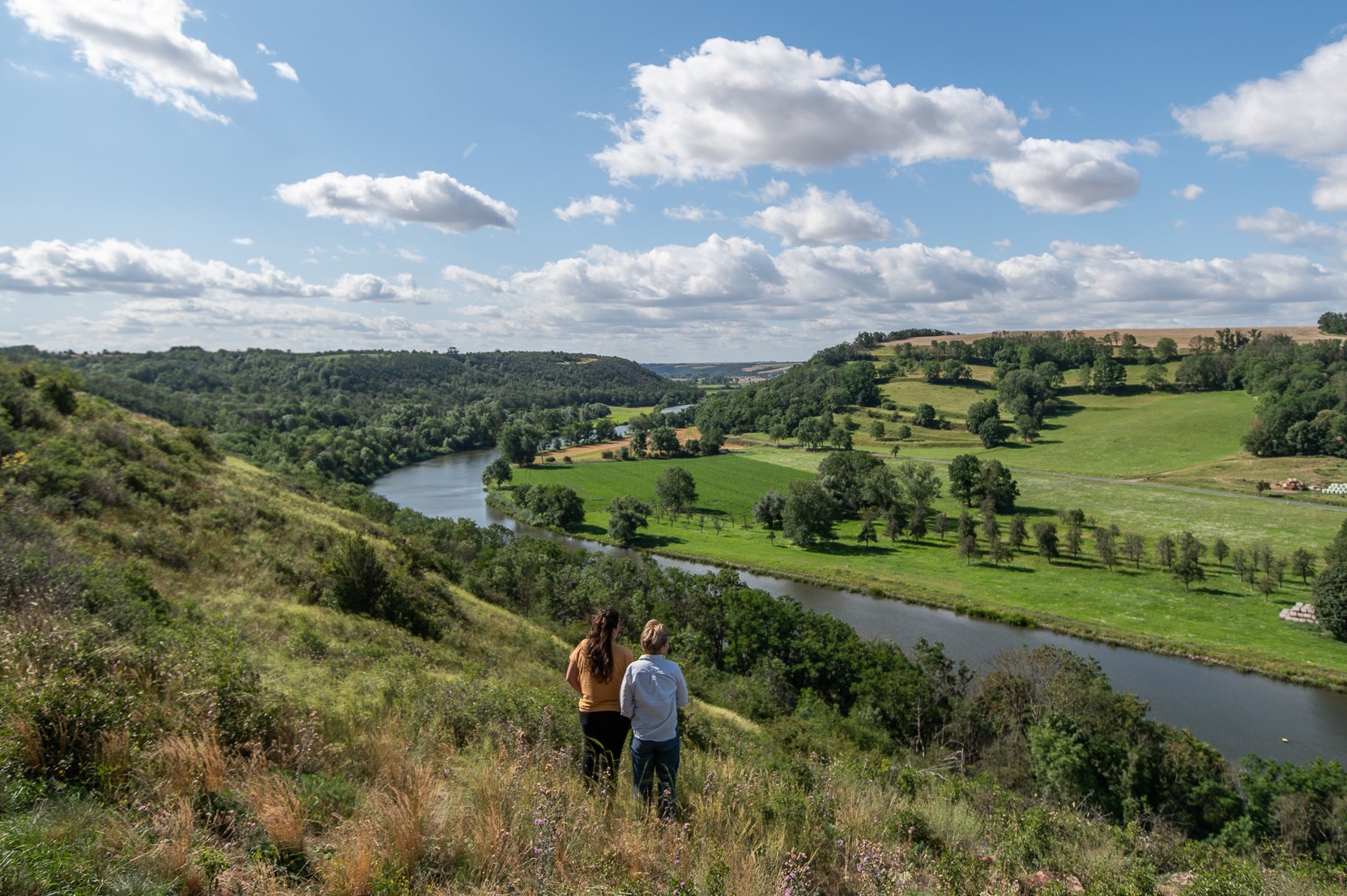
Lower Saale Valley Nature Park
The Lower Saale Valley (Unteres Saaletal) Nature Park covers the area between Halle and Bernburg, where myth-enshrouded alluvial forests, oxbow lakes and wet meadows adjoin steep rocky slopes to follow the course of the River Saale. In the diverse formations of the river valleys and on the imposing steep slopes with their dry grasslands and meadow orchards, you will find not just very old rocks but also deposits from the Ice Age. In the Lower Saale Valley Nature Park, the typical stone witnesses to the passing of time are sandstone, conglomerate, porphyry, and limestone.
A variety of habitats containing rare, protected plant and animal species and the characteristic cultural scenes of rural life and mining allow visitors to experience the landscape that has grown through history in Lower Saale. Visitors can find out all about geology, fauna and flora on guided walks, on educational nature trails in the nature park and at the Nature Park Centre in Bernburg. Hikers can gain insights into the Earth’s evolution on tours through a landscape dotted with porphyry domes, the Mansfeld basin (Mansfelder Mulde) or the Halle-Hettstedt Mountain chain to the north. The “White Wall” natural monument in Dobis is a special geological feature with sedimentation that documents history from Zechstein salt to porphyry conglomerate.
More: naturpark.unteres-saaletal.de
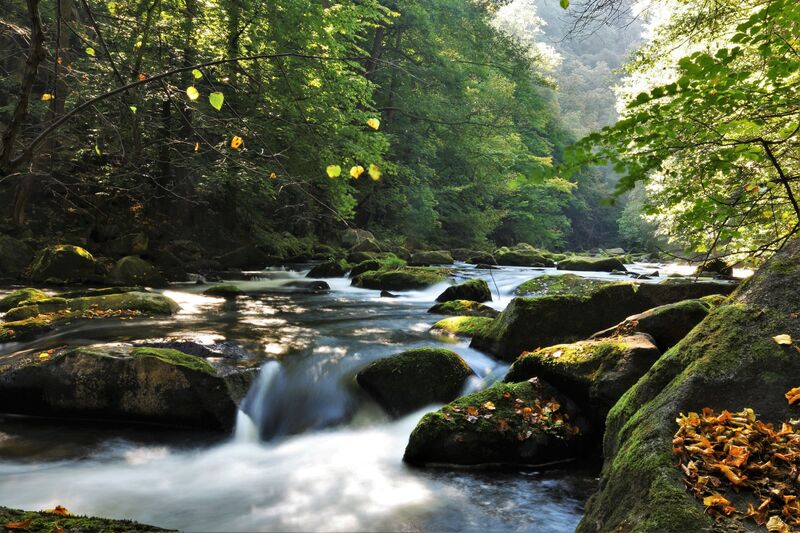
National Geopark Harz
Rugged granite cliffs rise up to the sky, rivers rush through deeply carved valleys. Expansive woods and flowering mountain meadows cover the highest uplands in Northern Germany. Castles and palaces offer magical views. And there’s Quedlinburg, a medieval centre of power, the fertile farmlands bordering the Börde district, and Goldener Aue valley: this is the Geopark Harz in Saxony-Anhalt. It’s a real treasure trove of biological diversity. This bounty includes over 2,000 ferns and flowering plants, and countless animal species, from marsh fritillary butterflies to black storks and wildcats.
If you’re lucky, you might spy a lively dipper bird by the clear mountain stream, or a stealthy lynx in the undergrowth. Romanesque churches and half-timbered houses from many centuries can be encountered not just in the World Heritage City of Quedlinburg or Stolberg, and are eloquent witnesses to a long history of settlement that is waiting to be discovered in many places. The exceptional geological diversity of the Harz region, the erstwhile abundance of mineral ores, usable waterpower and plentiful forests have encouraged more than a thousand years of mining and industrial history. The Association of German Engineers was founded in Alexisbad in the Harz district. Today, this town is at the heart of the world’s second-largest UNESCO Global Geopark, which contains five nature parks, the Harz National Park and the Karst Landscape South Harz Biosphere Reserve. The German Green Belt – the former East/West German border – runs along the western edge of the nature park, all the way from the border between Saxony-Anhalt and the Free State of Thuringia to the North Harz highway.
More: www.harzregion.de
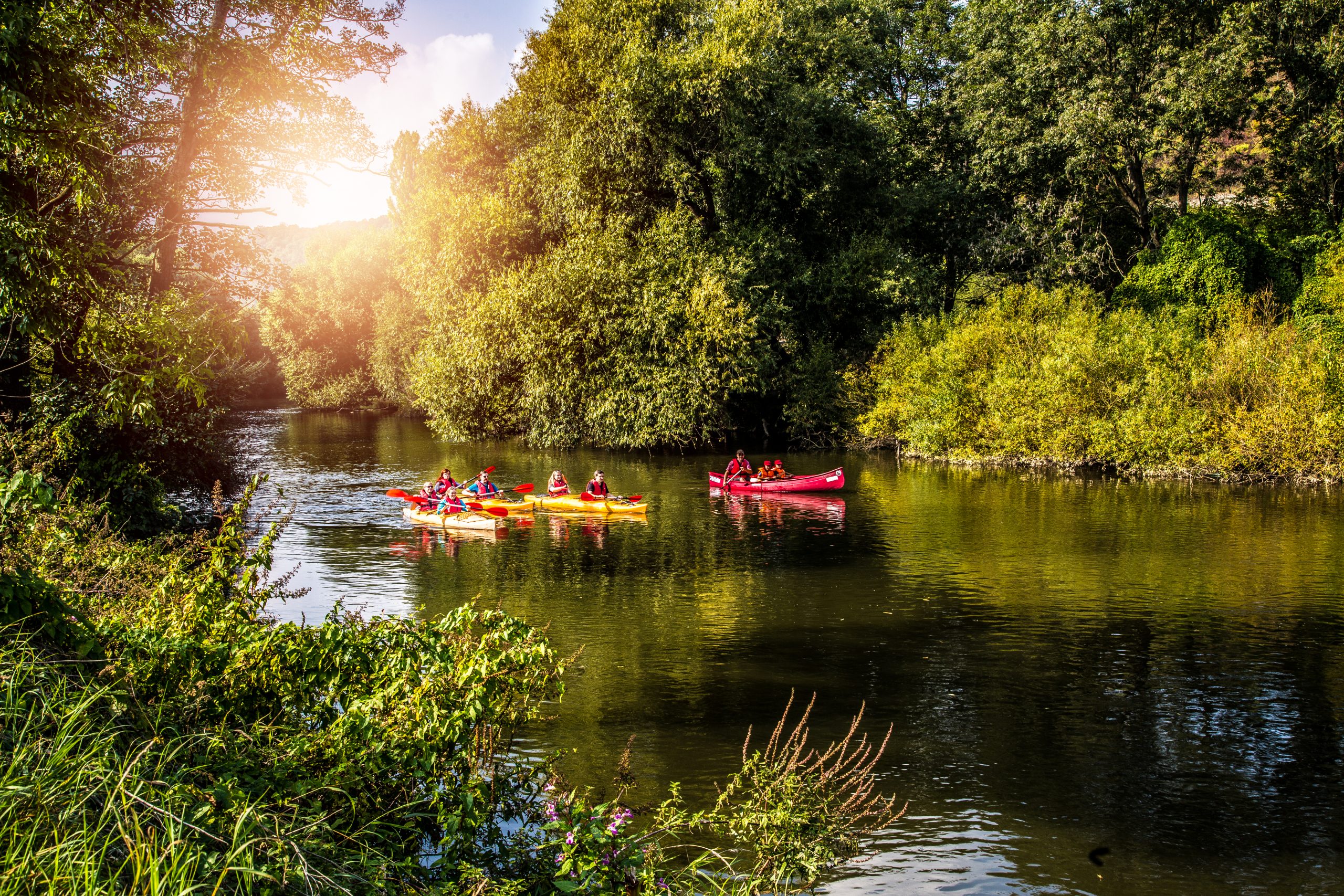
Saale-Unstrut-Triasland Nature Park and Geopark
Steep vineyards with centuries-old dry stone walls adjoin villages steeped in history and paint the picture of a Mediterranean landscape. Around 1,600 hours of sunshine and low rainfall over the year provide a sunny and mild environment for flora and fauna that love the heat. All this creates an impressive cultural landscape of fertile floodplains, meadow orchards, dry grasslands and forests, which is home to animal and plant species usually found in Southern Europe and the East European Steppes. These include the gentian and numerous kinds of rare orchid, such as the strictly protected lady’s slipper. This unique characteristic was also recognised by the artist Max Klinger, which is why he once called the region the “Tuscany of the North”.
Castles, palaces, monasteries, quaint villages and small towns rise up in the midst of this natural upland scenery – in Saale-Unstrut-Triasland, everyone will find interesting things to discover and experience. The sheer density of culturally, historically and archaeologically significant sites are a particular attraction to thousands of visitors a year. Buildings of international importance, such as Naumburg Cathedral or the Benedictine monastery in Memleben, can be explored along the many cycle paths, waterways and hiking trails. Numerous meadow orchards still testify today to the traditional art of fruit growing.